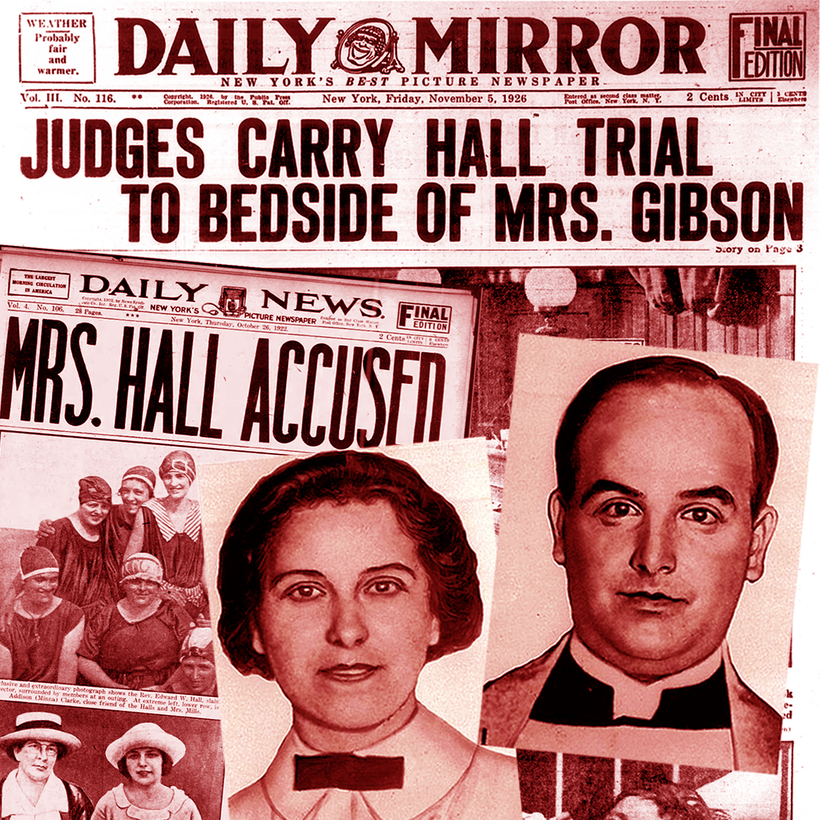When I was in my junior year of high school, my history teacher assigned us a project to write about something relating to the 1920s. I chose “Famous Crimes of the 1920s,” and I spent most of my time researching two still technically unsolved 1922 murders: that of the Hollywood director William Desmond Taylor (the subject, many years later, of William Mann’s vividly drawn 2014 Edgar winner, Tinseltown), and the shooting deaths of New Brunswick, New Jersey, minister Edward Hall and his lover, choir singer Eleanor Mills. This second set of murders is now the subject of Vanity Fair media reporter Joe Pompeo’s exhaustively researched book, Blood & Ink.
Both Taylor’s murder and those of Hall and Mills are remembered today because of their high scandal-and-sin quotient, major investigative errors by law enforcement, and changing technology (radio, newswires) that disseminated the news nationally in an unprecedented way. Though Mann focused more on illuminating the myriad dysfunctional personalities at the center of the Taylor case, Pompeo infuses more energy into the media coverage of Hall-Mills, and the tabloid wars that resulted from, and forever contaminated, the story.

Hall and Mills, both married to others, were found dead in a field on September 16, 1922, on their backs, bodies close to one another, a single bullet wound in his head and three in hers. (Mills’s throat was severed, too.) As police from both Somerset and Middlesex counties sorted out confusion over who had jurisdiction, the crime scene remained ripe for anyone and everyone to trample it, take souvenirs, and compromise it permanently. Eventually Hall’s wife and her brothers were arrested and tried for the murders, but they were acquitted in 1926.
Pompeo follows the contours of a traditional true-crime narrative, beginning with the murders, sketching out the lives of the victims, quoting from their passionate letters to one another, and sifting through the details all the way up until and after the acquittals. The story is well-rendered, bolstered by access to the original case files and trial transcripts, which had, apparently, moldered in a historian’s basement, untouched, for decades, until a source contacted Pompeo about them in 2019.
But the writing of the crime sections, brisk and well paced as they are, lacks a sense of depth. I never felt like Edward Hall and Eleanor Mills, or their intimates and acquaintances, rose above what was written about them in said case files and transcripts. Perhaps it’s because the case has been well mined in the century since its occurrence. I suspect it has more to do with the subtle changes in style that emerge when Pompeo turns his attention to the media’s symbiotic but ultimately parasitic role in sensationalizing the story to sell more newspapers.

The Hall-Mills murders happened a mere three years after the birth of the New York Illustrated Daily News, arguably America’s first proper tabloid, which, compared to broadsheets like The New York Times, The World, and the New York American, “looked as if it beamed down from outer space.” By the fall of 1922, the Daily News, Pompeo writes, “was selling six hundred thousand copies a day, making it the country’s third-largest newspaper.” Phil Payne, just 29, had been promoted to managing editor. And his star reporter, Julia Harpman, was all in on the Hall-Mills story, getting exclusives, tracking down witnesses, and leaning hard into the scandal-drenched story.
That Blood & Ink moves at a swift narrative clip is owing to Pompeo’s delight in detailing the competitiveness of the reporters covering the crime, as well as the differing internal machinations of tabloid versus broadsheet editors. When Adolph Ochs, publisher of The New York Times, was asked about the paper’s relentless coverage of the double murder, he said: “When the Daily News prints it, it is sex. When we print it, it is sociology.”
Ochs’s quote could have been made 100 years after the fact, detailing our ever perennial obsession with true crime, and how so-called highbrow practitioners are after the same things as the supposedly lowbrow ones. Blood & Ink gets at this media dichotomy, one that shows no signs of abating anytime soon.

Sarah Weinman is a journalist, the author of several books, including The Real Lolita and Scoundrel, and the editor of Unspeakable Acts


